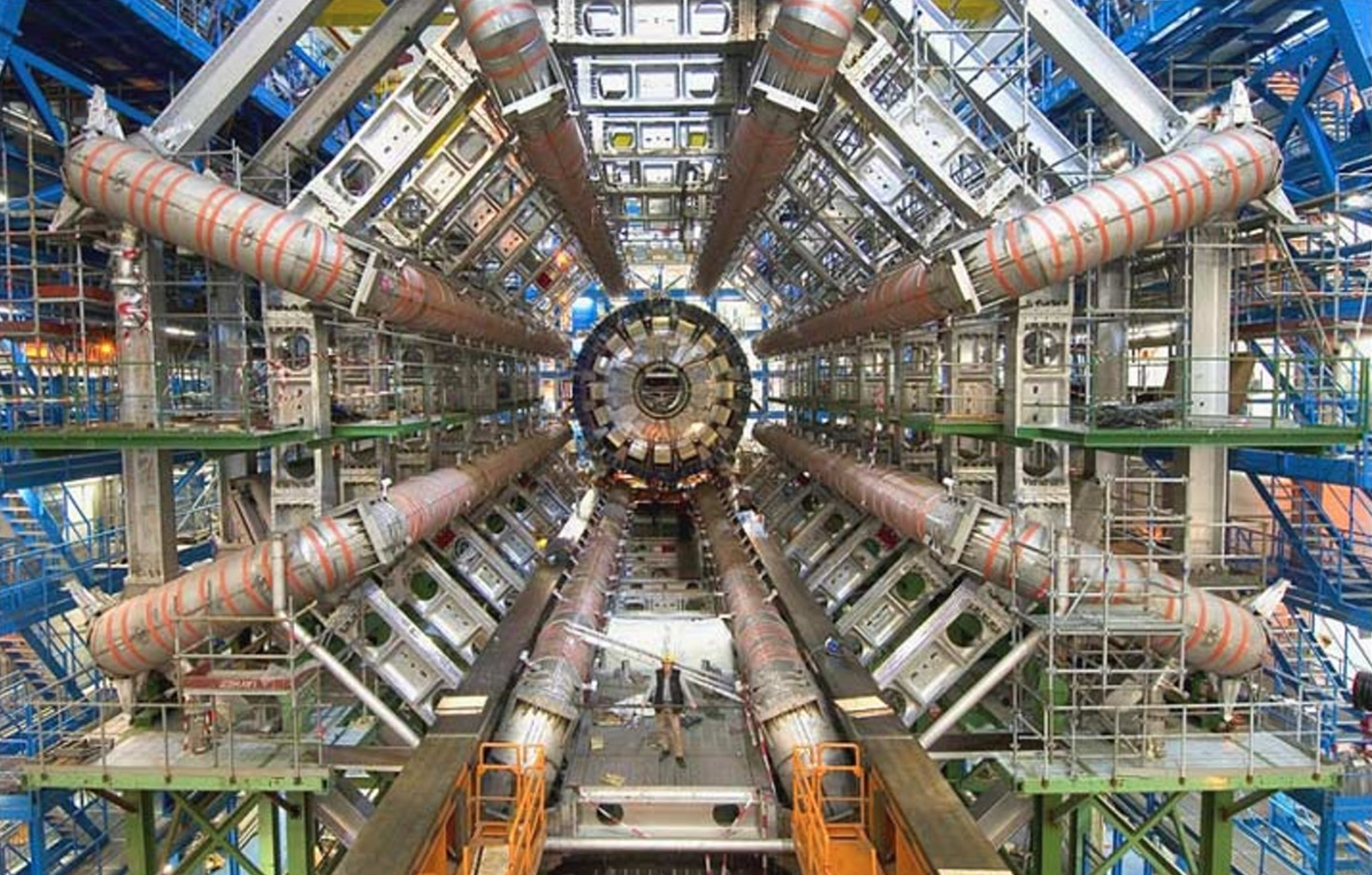What’s the hottest possible temperature?
We’ll take a look in this article.
Table of Contents
Background
Matter likes heat.
Atoms and subatomic particles (electrons, protons, neutrons) vibrate and move around more when they’re hot.
As the temperature goes higher, the faster they move. Likewise, the less heat there is, they vibrate and move more slowly.
Absolute zero
It’s easy to know how cold it can possibly go.
That’s known as absolute zero, which is 0 Kelvin. Kelvin is often used in scientific concepts and formula to avoid the mathematical implications of using the negatives in other temperature scales.
0 Kelvin is −273°C or −460°F.
When absolute zero occurs, all movements from atoms stop entirely. All heat is gone, so that’s as cold as it can ever literally get.
Hottest temperature on Earth ever (naturally)
The warmest temperature ever recorded on Earth naturally is now 56.7°C (134°F). This was measured on July 10, 1913 at Greenland Ranch in Death Valley, California.
Hottest temperature on Earth ever (artificially)
The hottest temperature on Earth ever was at the Large Hadron Collider (LHC). It’s also the hottest known temperature in the universe.
The LHC is the most powerful particle accelerator ever assembled. The accelerator sits in a tunnel 100 meters underground at CERN, the European Organization for Nuclear Research. It sits on the Franco-Swiss border near Geneva, Switzerland.
When they smash gold particles together, for a small fraction of a second, the temperature reaches 7.2 trillion degrees Fahrenheit.
That’s hotter than a supernova explosion.
Is it possible to go hotter?
Theoretically, it is possible get even hotter.
The Planck Temperature, is equal to 1032 K.
This is an incomprehensibly high temperature.
The universe is 13.8 billion light-years.
One light-year is 5.9 trillion miles, so the universe is 8.1*1022 miles wide.
When you start measuring the width of the universe is nanometers, you get to a similar type of number as the Planck temperature.
At the Planck temperature that’s about as hot as you’re going to get. Once it gets hotter, then normal physics starts to break down.
Weird things start to occur, such as gravitational force (which is weak) becoming as strong as the other natural forces (electromagnetic, strong and weak nuclear force). They also come together into one unified force.
Tying the four together is what’s called the theory of everything (final theory, ultimate theory, theory of the world, or master theory) which isn’t something that’s been solved at this point.
Namely, there is no candidate theory of everything that includes the standard model of particle physics and general relativity and can calculate the mass of the electron or the fine-structure constant.
The Hagedorn temperature
The Hagedorn temperature is believed to be the highest temperature that could possibly be reached.
Hagedorn is the point at which hadronic matter – all normal, ordinary matter in the universe (e.g., non-dark matter) – is unstable and breaks down.
This point is reached at about 2 x 1012 Kelvin.
Some theoretical physicists believe that, at this point, hadronic matter doesn’t actually break down.
Rather they believe it transitions into quark matter, which in turn can be further heated.
Nevertheless, quark matter is still in the theoretical realm. We aren’t sure if it really exists.
What string theorists posit as the hottest possible temperature
String theorists have another idea for the hottest temperature in the universe.
They say that the hottest temperature is around 1030 K, which is blazing hot but a little cooler than the Planck temperature above.
Why?
String theorists believe that the most fundamental things in the universe aren’t the normal particles (electrons, neutrons, protons) that we already know, but vibrating strings.
These entities, if they exist, have a different Hagedorn “maximum” temperature than hadrons.
But what string theorists postulate isn’t falsifiable. In other words, their predictions can’t be tested, which is the same that can be said for lots of other predictions.
With that said…
So we don’t know precisely what exactly the hottest temperature possibly actually is.
But according to physicists, the candidates mentioned are the best possibilities that we currently know.


